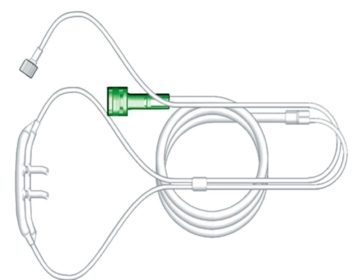
NOTE: The new HVT 2.0 by Vapotherm has an internal battery and rolls stand that allows for up to 2 oxygen cylinders to move a patient within the hospital for up to an hour.

The apparatus comprises an active heated humidifier, an air and oxygen blender, a single circuit, and a 2-prong nasal cannula. HFNC Setupįigure 1: General setup of Heated High Flow Nasal Cannula (Wikimedia: Strangecow, 2011) 3 6 This decreases rebreathing of the expired CO 2 present in the dead space, which can help with decreasing respiratory rate of the patient. 2 Additionally, HFNC offers the benefit of washout of carbon dioxide (CO 2) from anatomical dead space. In general, every 10L/min increase of flow yields roughly 0.7 cm H 2O of airway pressure when the mouth is closed and 0.35 cm H 2O when the mouth is open. As flow is increased on the device, this causes an increase in nasopharyngeal pressure. HFNC additionally may offer a small amount of positive end-expiratory pressure (PEEP) at high flow rates. This higher flow allows for higher amounts of concentrated FiO2 to be delivered and limits the amount of ambient air mixing in with the oxygen delivered. In contrast, heated high-flow nasal cannula (HFNC) is capable of delivering 100% humidified and heated oxygen up to flow rates of 60L/min. As mentioned above, higher flow rates are possible with a standard nasal cannula, but often are not well-tolerated by the patient because of discomfort. Additionally, this system blows cool, dry air that causes nasal mucosal irritation at higher flow rates, which can lead to epistaxis. 1 This is one of the main limitations of low-flow nasal cannula its low-flow state allows for mixing of ambient air with the oxygen source, ultimately resulting in a lower FiO2 delivered to the patient. For example, the FiO2 of a patient receiving 6L via nasal cannula is diluted to approximately FiO2 45%. Although oxygen directly inside the tubing from the wall has a fraction of inspired oxygen (FiO2) of 100%, this mixes with ambient air and dilutes the amount of FiO2 the patient actually receives.

A traditional low-flow nasal cannula provides up to 6L/min of flow (though higher rates are possible), which is far from the demand of patients in respiratory distress. When a patient is in respiratory distress, the inspired flow demand can exceed 100L/min. Supplemental oxygen is the most common intervention used when managing hypoxic patients and can be easily applied via nasal cannula connected to oxygen from the wall.Īt rest, the inspired flow of a normal respiratory cycle is approximately 30 liters (L) per minute.


 0 kommentar(er)
0 kommentar(er)
